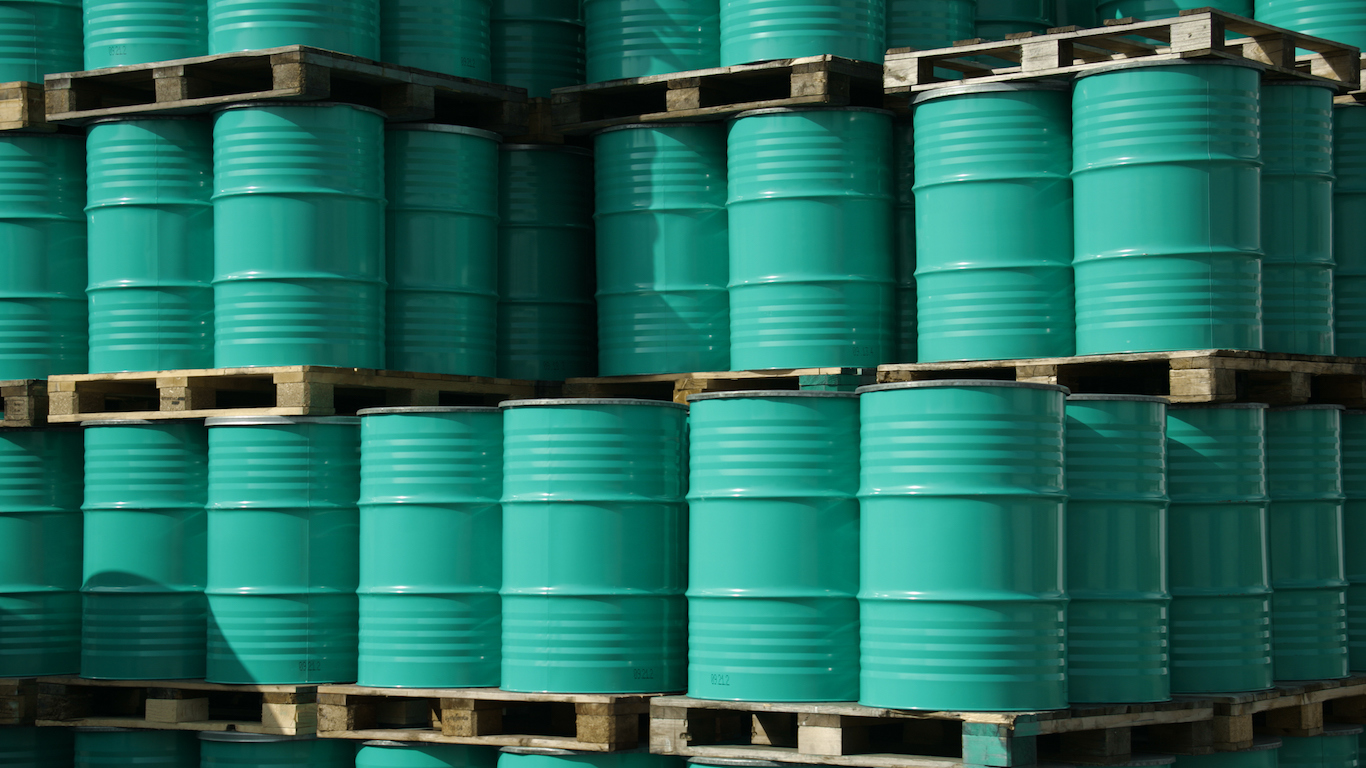Energy
Crude Oil Prices Solidly Higher, Ignoring Rising US Inventories

Published:
Last Updated:

The U.S. Energy Information Administration (EIA) released its weekly petroleum status report Wednesday morning showing that U.S. commercial crude inventories increased by 3.6 million barrels last week, maintaining a total U.S. commercial crude inventory of 450.8 million barrels. The commercial crude inventory remains about 6% higher than the five-year average for this time of year.
Tuesday evening the American Petroleum Institute (API) reported that crude inventories decreased by just under a million barrels in the week ending February 8. For the same period, analysts expected crude inventories to rise by about 2.3 million barrels.
EIA reported that gasoline inventories increased by 400,000 barrels and remained about 4% above the five-year average range and distillate stockpiles rose by 1.2 million barrels. The API said gasoline inventories increased by about 750,000 barrels and distillate stockpiles dropped by about 2.5 million barrels. Analysts were expecting gasoline inventories to rise by about 508,000 barrels, and distillate inventories were expected to drop by about 1.1 million barrels.
Following the Obama administration’s 2016 lifting of the ban on U.S. crude oil exports, about 20% of U.S. crude is now exported, compared with about 4% when the ban was in effect. Most of the pre-2016 exports were directed to Canadian refineries, which then exported much of their products back to the United States. U.S. exports of crude have averaged about 2.3 million barrels a day for the past three months and analysts at RBN Energy think that if West Texas Intermediate (WTI) prices rise to the mid-$60 range, exports could total 6 million barrels a day by 2024. That’s about 35% to 40% of total U.S. crude oil production.
Other highlights from this morning’s EIA report:
According to AAA, the current national average pump price per gallon of regular gasoline is $2.273, down less than half a cent from $2.277 a week ago and up by nearly three cents compared with the month-ago price. Last year at this time, a gallon of regular gasoline cost $2.56 on average in the United States.
Before the EIA report, benchmark WTI crude for March delivery traded up about 2.2% for the day at around $54.27 a barrel, and it traded at $54.12 shortly after the report’s release. Crude prices were rising following a report of supply cuts and encouraging news on U.S. trade talks with China.
Here is a look at how share prices for two blue-chip stocks and two exchange-traded funds reacted to this latest report.
Retirement can be daunting, but it doesn’t need to be.
Imagine having an expert in your corner to help you with your financial goals. Someone to help you determine if you’re ahead, behind, or right on track. With SmartAsset, that’s not just a dream—it’s reality. This free tool connects you with pre-screened financial advisors who work in your best interests. It’s quick, it’s easy, so take the leap today and start planning smarter!
Don’t waste another minute; get started right here and help your retirement dreams become a retirement reality.
Thank you for reading! Have some feedback for us?
Contact the 24/7 Wall St. editorial team.